Today = Supply list so you have a chance to go out and get what you need to be ready for the classes. The classes are not going to cost you a class fee but you will have to buy supplies/find them not always the easiest thing to do. The classes will be posted here on my blog. You are welcome to ask questions I will answer what I can. I do not claim to know all on this subject at all but I can give you a great starting point and you can take it from there. We are just making swatches for you to keep in a notebook not a project at this point.
Please realize I may have missed something here in the supply list and not everything in this list is needed some are just helpful. If you want to wait and see the tutorials then you can figure out what you need as we go, or you can always go back and do this later after tutorials to see if it interests you or not. Please don't go out and spend a fortune and blame me. Don't let this list scare you like I said most is just fyi stuff and not needed but a reference source for future work.
Here list their descriptions follow below with more details
- 3 ring binder notebook with viewsheets
- view sheets to keep samples neat afterward for reference
- cotton/and cotton blends (my knowledge is 13 years old and I have not done any of this type of sewing in a while so some of these fabrics may be obsolete now but it should give you a good starting point). The 100% cotton ones are the most expensive the blends cost less and wash easier but harder to work with.
- Bearissima I: Swiss batiste sheer, used in christening gowns and pinafores, and childrens dresses up to size 3 not as strong or as thick for older children.
- Berissima II: Swiss batiste slightly heavier than the one above Nice for blouses and older size children also good for smocking (this isn't the best for lace work)
- Nelona, a little shiny and slightly thicker, used for rolls and itwhips lovely. Used for lace shaping and for childrens clothing on sizes over 3. This is one of the finest Swiss batiste there is
- Finissima: non shiny batiste thicker this is a little more tailored looking has more body
- Dotted Swiss: has a nice texture, the dots may be pulled out for embroidery work
- Savannah 100% cotton lawn, usually comes in an extra wide width used for blouses, lingerie and smocked inserts
- Imperial batiste, 35 % cotton and 65 % polyester, inexpensive and washes easy. warning these fibers tend to do their own thing can be a pain to work with during construction.
- Netting: great for machine lace work, inserts, and collars
- Micro checks: 100% cotton and or cotton/poly blend this is a casual sort of thing
- Silks
- Batiste, do not starch will damage, hard to shape lace on this, but this is nice for christening gowns and blouses
- Dupioni: raw silk comes in lots of colors and even plaids
- Organdy: this is a softer fabric than cotton organdy, doesn't wrinkle near as bad. Used for pinafores, sashes and collars
- Linen
- This is handkerchief weight with a high thread count
- Wool
- Viyella : 20% wool 805 cotton, this is washable, good for coats dresses and jackets.
- Swiss Laces / Entredeux
- Swiss Entredeux
- Swiss Entredeux beading
- Swiss Beading
- Swiss Edging
- Swiss Embroidery Insertion
- Swiss Insertion
- French laces
- French lace insertion
- French lace beading (this sample shows a french beading sewn to a french insertion already sorry I could not find a piece of beading that wasn't sewn to something already in my house)
- French lace edging
- Other laces (this section is mostly just info for reference)
- Tatting
- You can buy machine made tatting these days that can be sewn on with a machine as it has a chain stitch holding the picots together. I do not recommend machine sewing hand made tatting as the needle can cut/sever and break the knots in tatting. This first sample is a machine made tatted insertion beading sorry the second is the only machine made tatted edging I have and it is already attached to one of the samples for the tutorials. You can always add a crochet chain to your own tatting to make it able to be sewn on by machine but the time to do that would probably be longer than just hand sewing it.
- machine made tatted insertion (store bought tatting that I was told was knotted by a machine I am not sure if it was or not most machine tatting are acid lace this is not that it is actual knot but I was told there are machines that can do this I do not know for certain on that)
- (machine/store bought) made tatted edging( this sample is attached to a piece of batiste already)
- handmade insertion or edging
- handmade tatted edging
- handmade tatted insertion/beading
- handmade tatted peter pan collar
- Knitting
- You can usually make this yourself not usually found in stores but you can find it at antique stores, thrift shops, and garage sales and things of that sort even flee-marts. Can be machine sewn onto to item (this is just info you do not need it for lessons). I am still learning how to knit lace so I don't have many samples of this. This is one edging I have made and it isn't blocked yet it would look lacier after blocking.
- Crochet: Can be machine or hand sewn on. You can find some at antique stores, thrift stores and garage sales, flee marts... You can make it your self. Not usually found new in stores (might have a unique store in your area who knows). You can use family heirloom lace up this way like your great grandmothers lace and so on. If you do use family heirlooms please do practice before using it as I would hate you to wreck something that can not be replaced.
- crochet edging : This is an antique piece that was damaged and in 6 pieces I took the damaged parts away and re-crocheted them and added a new header (the top part) so it can now be used and I have almost 2 yards.
- crochet insertion ( this is a boring one they can be much nicer)
some of these are insertions and some are edgings
Here is a small sampling of handmade laces I have ready to use at all times. Some are antique some vintage some new. Some are even a mixture of the these. Meaning antique trims with vintage thread made by me thus new.Traditional Heirloom sewing does mix and match laces so if you do this it is fine it is a nice way to use one real nice (expensive) focal point lace with lots of other lace as filler and make the item look real expensive when you have actually only used one real expensive piece.
- Fabric markers
- blue, fine line washout marker
- #2 pencil
- Pins and needles
- #60 or #65 or #70 machine needle ( these are very fine needles)
- # 1.6/70 or #2.0/80 twin needle ( this is used for pintucks) make sure you get one that works with your machine the wider the spacing the larger the pin tuck but some machines the older ones (10 years or older) can not use the very large ones.
- double wing needle this is used for top stitching (see picture above)
- size 10 crewel (English) needle for hand sewing
- fine, sharp,long straight pins (needs to have glass head pin or a plain head (as you don't want to accidently melt plastic to the bottom of your iron or your project)
- trolly needle (not needed but helpful) used to feed fabric under sewing foot so you can see better and not have your hands in the way (also very help in attaching gathered lace for the same reason)
- Interfacing (this is used so you can make a sample card of your stitches in the first tutorial)
- 2 bobbins
- fine white cotton sewing thread (Mettler, DMC, YLI. Tanne) (on a side note when working with colors and sewing lace to fabric always match thread to lace not fabric)
- basic sewing supplies plus the items below
- scissors sharp and in very good working order as thin fabrics are shreaded if cut with pour quality scissors
- blunt pocket scissors are very useful ( G-4ps, by ginger) but these are not needed just helpful
- Sewing Machine
- please have it cleaned oiled and serviced and it needs to have an adjustable zig zag stitch (in other words a simple basic machine is fine if it is in good working order. I do not own a fancy machine would love to someday but basic works. We are going to do heirloom sewing on normal machines in other words not the fancy ones.
- pin tuck foot 7 grove preferred but 3 or 5 grove will work too
- ok this part is a little fancy if you have a built in dual feed great if not a walking foot plus an open toe embroidery foot are helpful (you can buy these as an add on at a sewing machine store
- Closures
- mother of pearl buttons (snap and hooks and eyes are not preferred but some people use them as you have seen in the old outfits I have show you but they are not preferred because they can rust and wreck the garment)
- beauty pins (these are optional very traditional but terribly hard to fine)I found a site on line that sells these they are expensive so I do not recommend using beauty pins on everything. They do add a special touch but I don't have that type of money.
- Ironing
- Distilled water for your iron (this way you don't get minneral deposits in your machine or rust as both will damage your machine and work)
- Niagra spray starch (do not get scented, no lemon scent, it has a slight bit of oil that can stain)
- iron (clean iron) ( I don't have one but if you have a mini iron that is good to add too but not needed)
- clean iron board (preferable with new cover as you don't want to wreck your nice fabrics)
- press lace carefully on medium setting
- use starch on all fabrics you want you fabric almost like typing paper if any one can remember that type of stiffness anymore
- a clean white towel (this is to cushion board to protect embroideries when ironing and to protect your projects from anything that could be on your ironing board if you do not have a new cover)
- Laundering either Ivory soap for every day use or fels-naptha if you are putting the item away for storage never store something starched that is just asking for bugs to eat your items. Fels-naptha has naphthalene in it that helps keep the bugs away.
If you want the true heirloom patterns go for vintage/antique on either ebay or etsy if you can't get true vintage/antique here is your best sources.
Martha Pullen: any of her books are great (but she does a lot of repeat info) as they are expensive go to a book store and see which you want the most before buying recommend french sewing by machine, and or Antique clothing, grandmother's hope chest ,and heirloom sewing for woman
Magazines : Australian Smocking and embroidery, Sew beautiful, and creative needle magazine
Patterns : Childrens corner,
There are many great sources out there this is just a few.


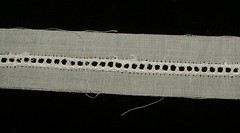
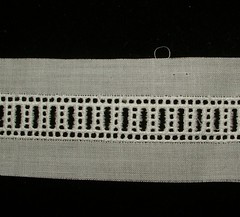
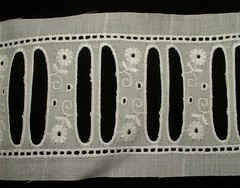
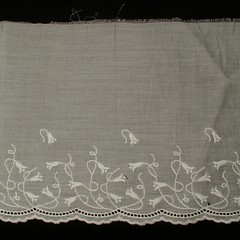
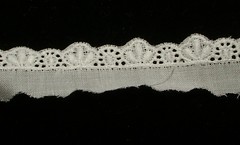
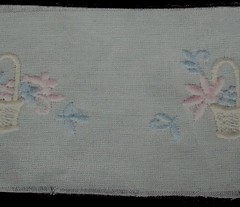
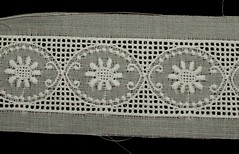
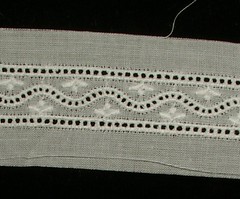
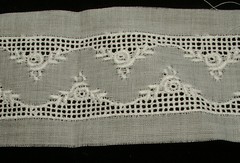
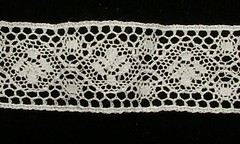
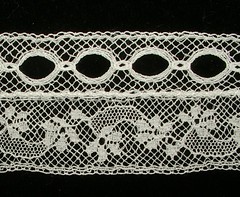
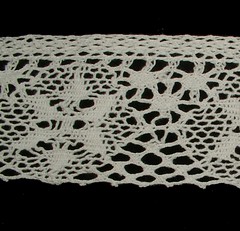

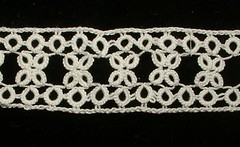
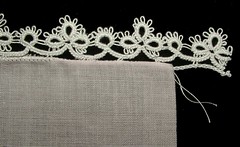


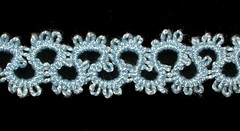
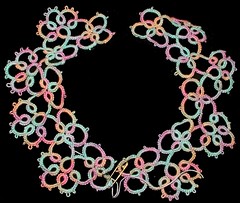
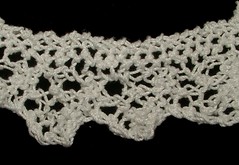
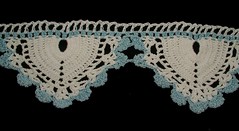
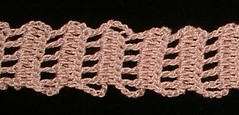
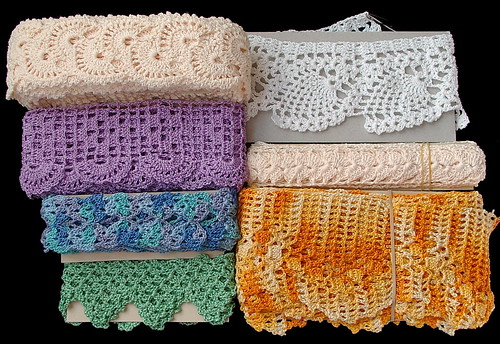
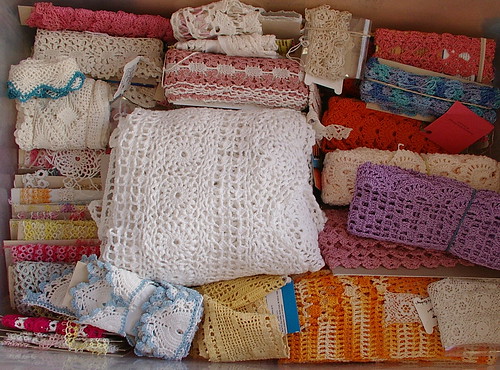
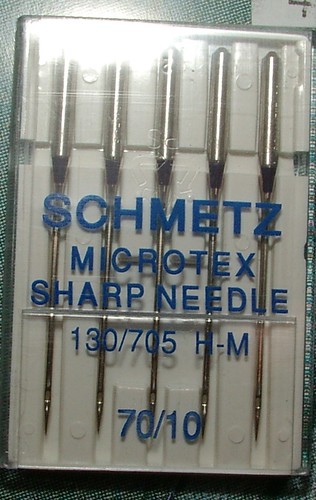
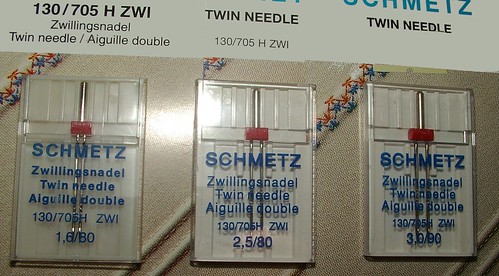
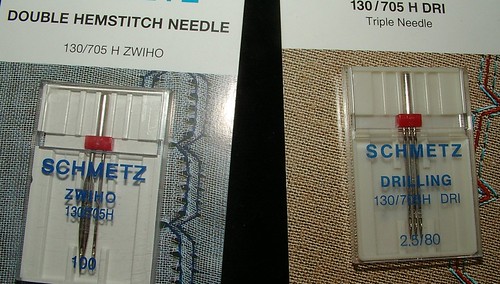
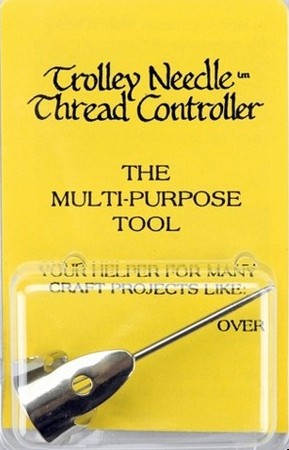


Ahh...Lace dreams...beautifully delicate.
ReplyDeleteThank you for posting that very pretty picture of your crochet edgings, I love it...reminds me of my Gran.
^__^
Wow, an impressive collection of information! Just knowing the names of the types of lace is interesting for a layman.
ReplyDeleteThe two pieces of tatting labeled machine tatting are handmade. If you can see the knots (and you can) the work is handmade. No one has invested the time and effort to reproduce tatting by machine. All machine made "tatting" is an embroidery to produce a burnout/chemical lace.
ReplyDeleteThe knots are not reproduced in machine embroidered tatting. Your samples show the knots and the picots are single threads.
I love that you include tatting in your work and classes, but none of your samples in this posting are machine made.
Great article! Thanks.
ReplyDelete